Celebrating Seachtain na Gaeilge
Seachtain na Geailge was celebrated in style in Ballagh NS with a Ceolchoirm of music and dance. For more pictures, see gallery.
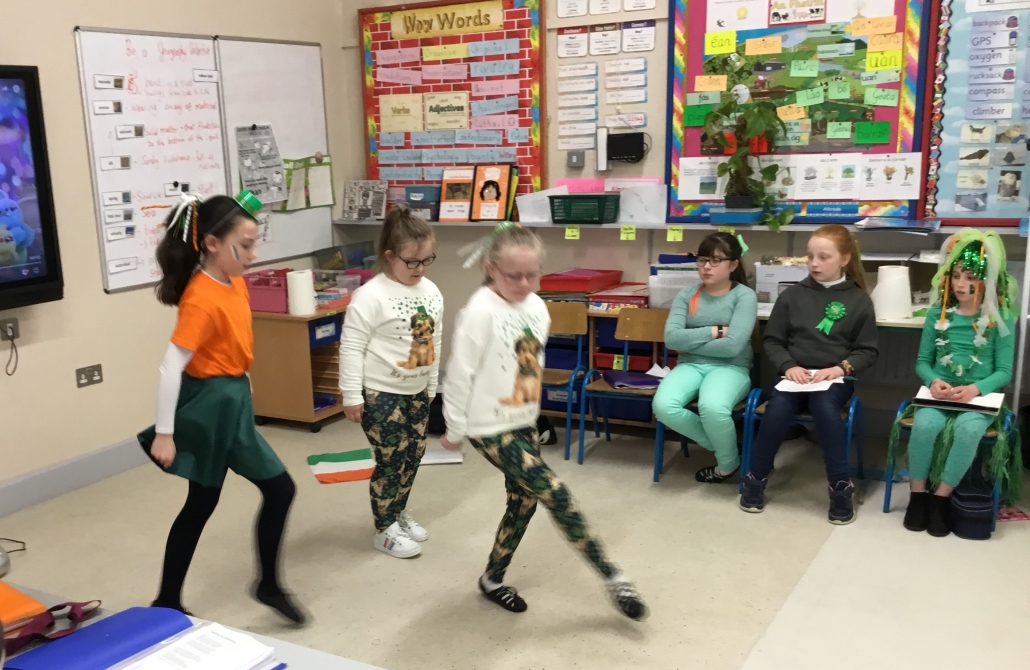
Seachtain na Geailge was celebrated in style in Ballagh NS with a Ceolchoirm of music and dance. For more pictures, see gallery.

| We were delighted to meet so many wonderful and interesting characters on World Book Day! Well done to all the children who dressed up as a character from their favourite book. A huge effort was made to celebrate reading and creativity by the children – well done all! See gallery for more pictures. |
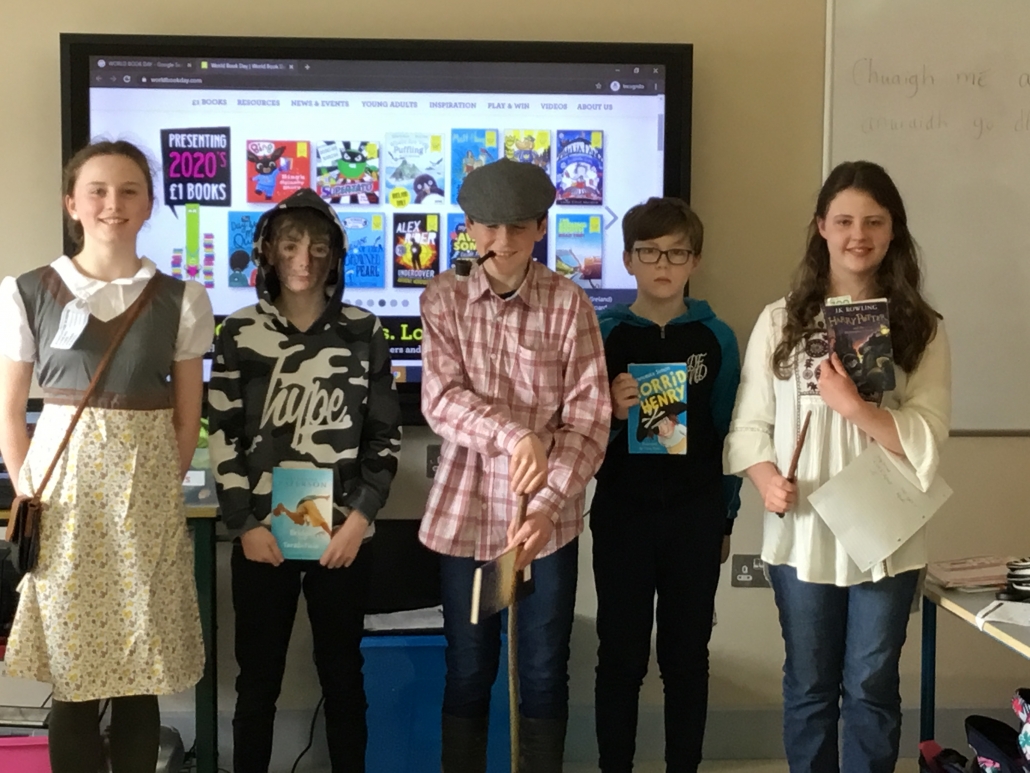
The staff and pupils of Ballagh NS had a special treat recently, when the pupils of 4th class entertained us with a wonderful lunchtime drama. The pupils scripted the show, sourced their own props and costumes and even designed brochures. The performance took place on our Astro Turf and the name of the show was Goth Girl. Certainly an Oscar winning performance.
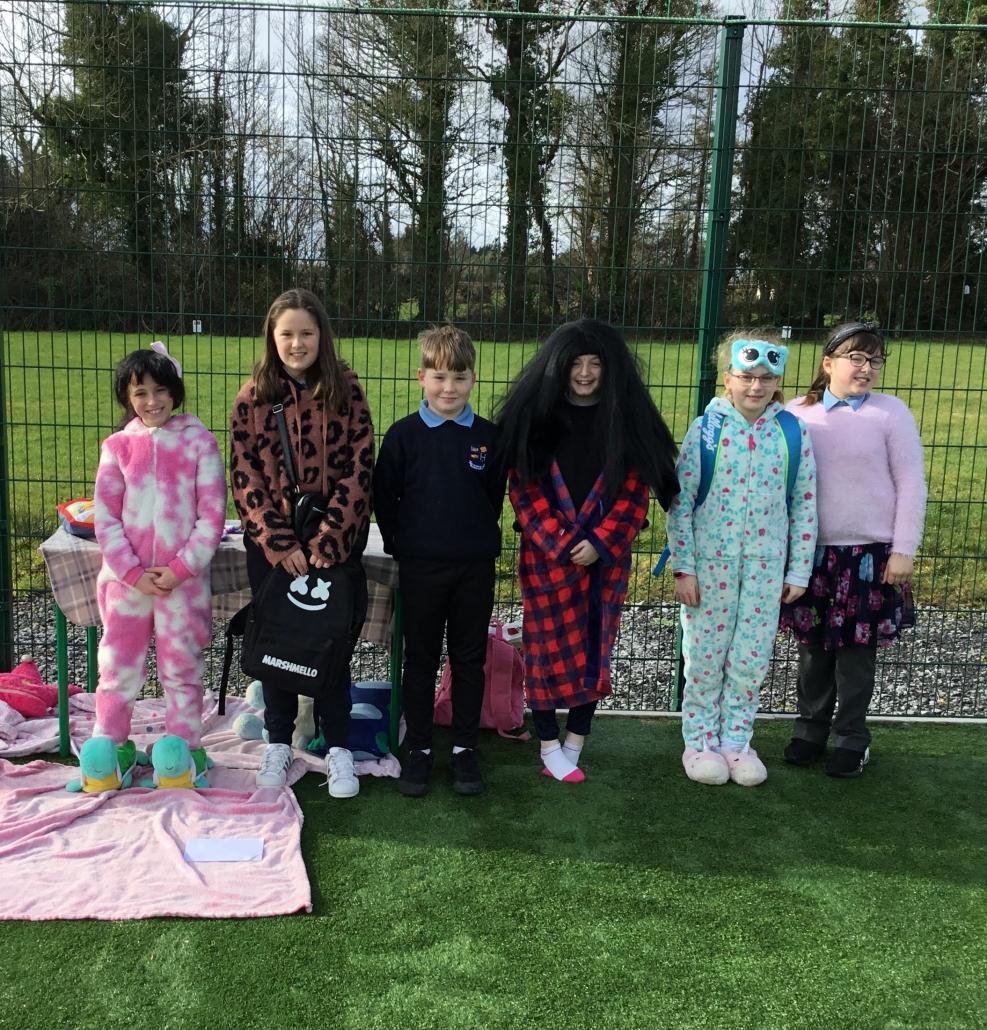
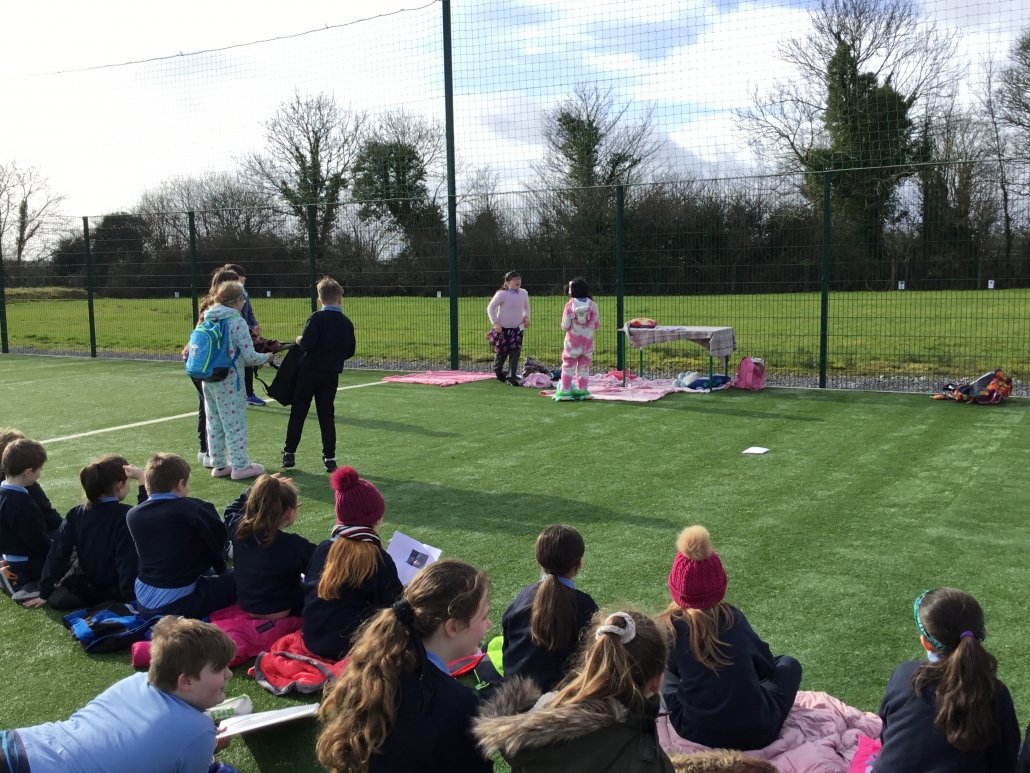
Ballagh NS are holding a used clothing collection on Friday 6th March. All funds raised go directly to the school. If you have any unwanted clothing, footwear, belts, handbags, hats, linens, or household textiles, please put them in bags and bring to the school during the week leading up to 6th. All donations will be gratefully received
Pupils in our Senior Room were busy designing and writing Irish books for the Scríobh Leabhar Competition. Congratulations to everybody who took part and created wonderful books. The two winning groups are:
Katie Smith, Siobhán Maddden and David Cox for their story “Fíor Scéal : Na Trí Mhuc agus Mac Tíre Cneasta.
Leah Trimble, Sophie Cox and Áine Madden for their story “Ruaille Buaille ar an bhfeirm”
Both groups will attend a prize giving ceremony in Carrick Education Centre on Tuesday, 10th March.
WELL DONE TO ALL
All pupils are currently attending a seven week session of swimming lessons in Roscommon Leisure Centre.
It was a happy Tuesday in Ballagh NS as everybody tucked into Crépes hand-decorated with delicious treats, by 5th and 6th class pupils.
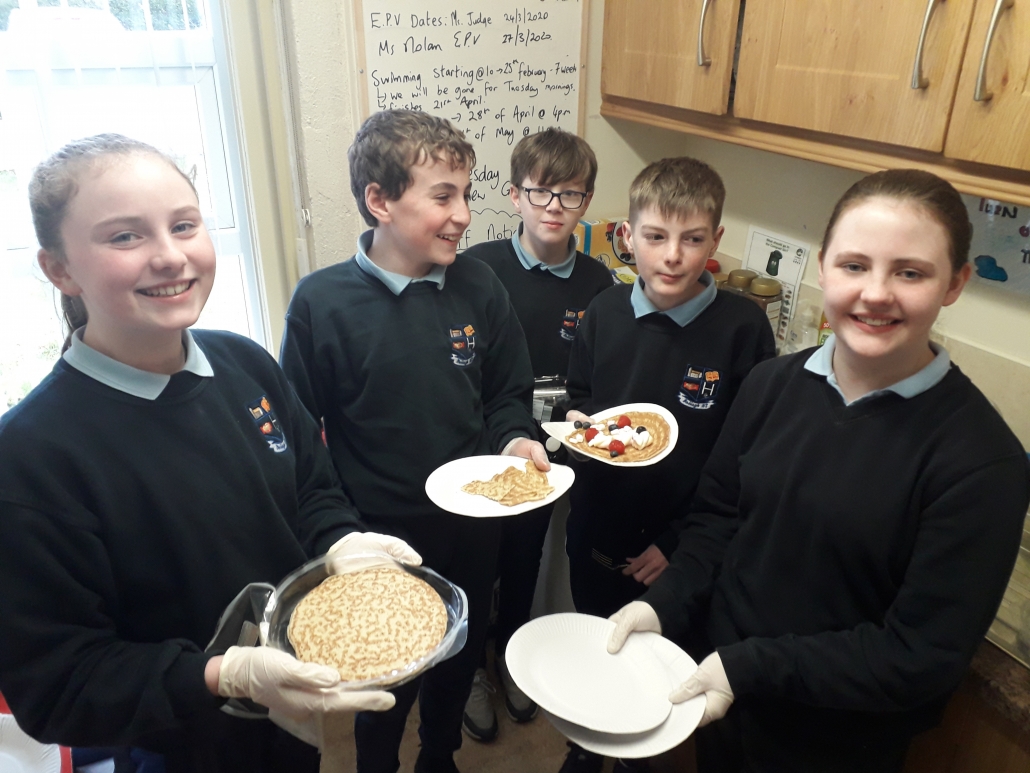
Big congratulations must go to Emily Ryan who was a winner in the Roscommon Drama Festival Essay Competition. Emily will attend a prize giving ceremony tonight in Aras an Chontae. Well done Emily!!
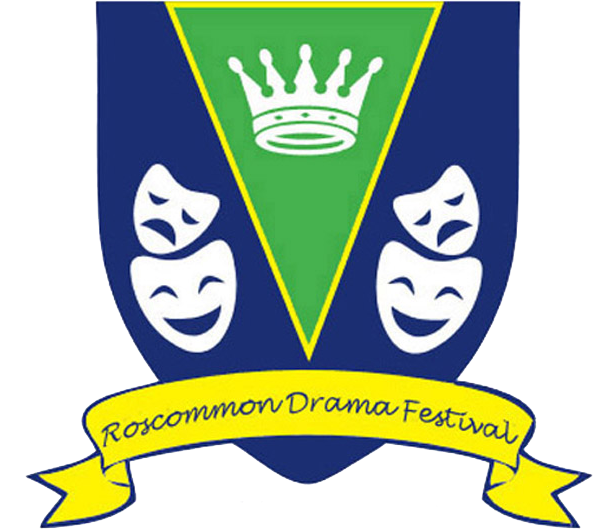
The subjects of Science, Music and Art were all incorporated in a recent project undertaken by the pupils of Ballagh NS when they designed and made musical instruments using recycled materials. Some wonderful instruments were created as can be seen from the photos below. For more photos, go to Gallery.
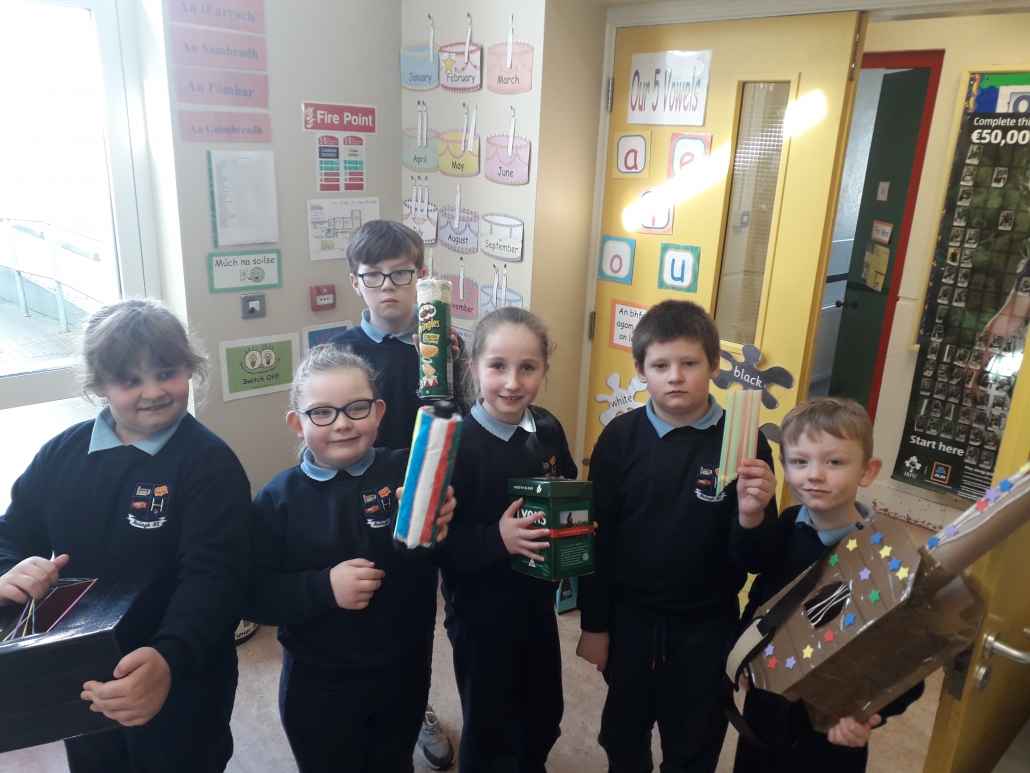
In preparation for their Confirmation, the pupils of Ballagh NS attended a retreat in Knock today.
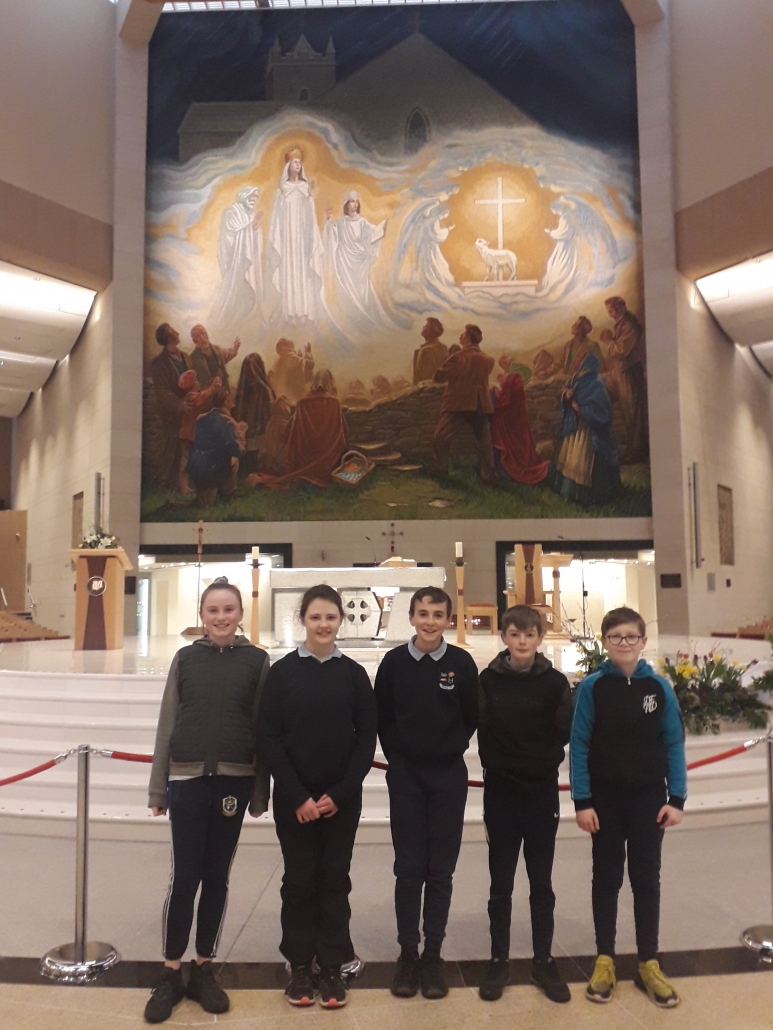
Ballagh NS, Kilrooskey, Co. Roscommon F42 CF90
Phone: 09066 25884
Email: ballaghns1@gmail.com
This site uses cookies. By continuing to browse the site, you are agreeing to our use of cookies.
Accept settingsHide notification onlySettingsWe may request cookies to be set on your device. We use cookies to let us know when you visit our websites, how you interact with us, to enrich your user experience, and to customize your relationship with our website.
Click on the different category headings to find out more. You can also change some of your preferences. Note that blocking some types of cookies may impact your experience on our websites and the services we are able to offer.
These cookies are strictly necessary to provide you with services available through our website and to use some of its features.
Because these cookies are strictly necessary to deliver the website, refuseing them will have impact how our site functions. You always can block or delete cookies by changing your browser settings and force blocking all cookies on this website. But this will always prompt you to accept/refuse cookies when revisiting our site.
We fully respect if you want to refuse cookies but to avoid asking you again and again kindly allow us to store a cookie for that. You are free to opt out any time or opt in for other cookies to get a better experience. If you refuse cookies we will remove all set cookies in our domain.
We provide you with a list of stored cookies on your computer in our domain so you can check what we stored. Due to security reasons we are not able to show or modify cookies from other domains. You can check these in your browser security settings.
We also use different external services like Google Webfonts. Since these providers may collect personal data like your IP address we allow you to block them here. Please be aware that this might heavily reduce the functionality and appearance of our site. Changes will take effect once you reload the page.
Google Webfont Settings:
You can read about our cookies and privacy settings in detail on our Website Privacy Statement page.
Website Privacy Statement